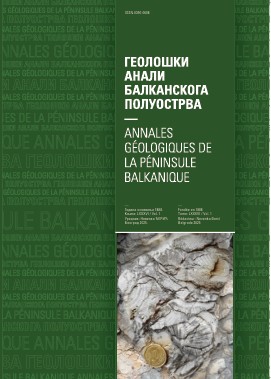Plitkovodni siliciklastiti ordovicijuma Homoljskih planina, Istočna Srbija (II)
Ordovician shallo-sea siliciclastics of Homolje Mountains, Eastern Serbia (II)
Abstract
Ordovician rocks of Homolje mountains are shallow-sea metaclastics from three sedimentation cycles. The lower two correspond to the Lower, and Lower and Middle Ordovician, and the upper one to the Upper Ordovician. Characteristics of the first and second cycles are described earlier (Maslarević and Krstić , 1996). The Upper Ordovician deposits (Slatina Formation), transgressive over older Ordovician rocks, green rocks and gneisses are described in this article. Upper Ordovician rocks aie dominantly metasandstones, subarkosic to quartzose in composition, and metasiltstones, metashales, metacherts, and conglomerates. Sediments were deposited on swallow shelf and between the shelf and shoretace. Ordovician age is dated using brachiopods (Strophanemdae, Orthidae) and echinodenus (Cystoidea- Heliocmutes). The thickness of Upper Ordovician rocks is about 600 metres.
Copyright (c) 1997 Geološki anali Balkanskoga poluostrva

This work is licensed under a Creative Commons Attribution 4.0 International License.










